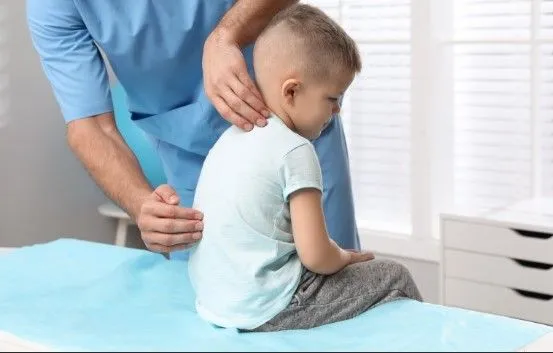Overview
Symptoms of the disease, which are not very obvious in the early period, lead to different health problems in the later periods. Therefore, it is important to know the symptoms of the disease well. Among the main symptoms of scoliosis, we can count the following:
"Spine bending to the right or left side, visible curvature of the spine, asymmetry in the shoulders and hips, difficulty in standing upright, shortness of breath, problems in walking, back, waist and shoulder pain, clothes not fitting properly."
Families have the most important role in understanding scoliosis and not missing its symptoms. Parents need to carefully observe their children.
For this, the back and waist of the children should be looked at, it should be monitored whether the spine goes straight down, whether there is a hump, whether there is a low shoulder, whether the waist and shoulder alignment is correct.
In addition to all these, it is important for families to check whether their children's spine protrusions are a single line in the midline, and to observe walking balance. Scoliosis disease can also manifest itself with back and low back pain. In the early stages, the patient may not be able to feel these symptoms.
For this reason, it is necessary to perform a spinal examination at an early age, as well as visual and hearing examinations for children. In addition to the examination, having a spine X-ray for children makes early diagnosis possible.
As the curvature progresses in a neglected spine patient, problems in lung capacity and heart development increase. This situation adversely affects the respiratory and circulatory system of the person.
Scoliosis treatment is done with surgical methods
Pre-planning in scoliosis surgery also helps to know which part of the spine will be intervened. During this surgery, the spine is straightened by placing screws. In scoliosis surgeries, surgical teams use systems called neuromonitors.
These monitors provide instant messages about the nerves in the spine. In scoliosis surgeries, it is of great importance not to damage the spinal nerves, as well as to straighten the patient's spine.
On the first day after the operation, the patient is allowed to walk, if he cannot walk on the same day, he is carried out the next day. Then an X-ray is taken by keeping him standing upright.
It is checked once again whether the screws are inserted in the right places by tomography. Shoulder balance and hip balance are checked. Then the patient is discharged within 5 days.
Patients get taller after the surgery
Since scoliosis is a health problem caused by the curvature of the spine, it also negatively affects the physical appearance.
For this reason, the most important effect after the operation is the improvement of the patient's spine, as well as some lengthening of the patient's height. Performing scoliosis surgery with a neurosurgeon and orthopedic specialist creates confidence in the patient.
After the surgery, the process of fusing the screws attached to the spine to the bones begins. Over time, there may be complications, breakage and loosening of the screws. Depending on the strain, the pelvic (hip) setting of the person may deteriorate.
To prevent this, patients should pay attention to their weight balance, do not lift heavy loads, stay away from compelling exercises, do exercises to relax their muscles, and avoid sudden movements. If these are done, it is possible to maintain the healthy appearance of the spine provided by surgery for many years.
